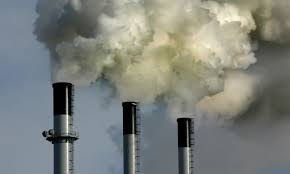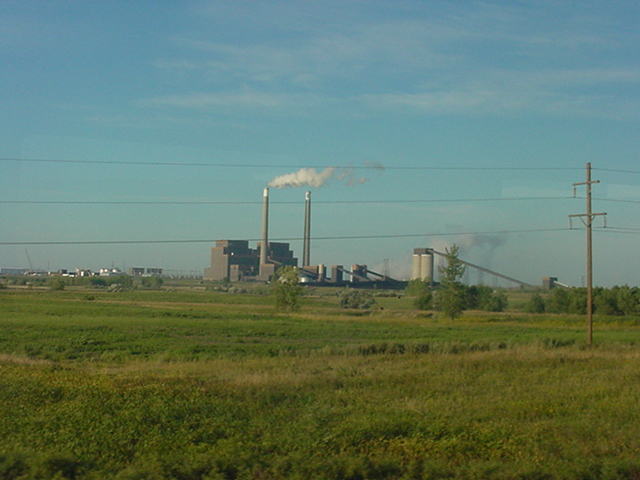EQB Presentations re: EPA Regulations
June 20th, 2014
Hot off the press… errrr, close, they came in yesterday, THANK YOU to MPCA staff for forwarding. Check out Mark Seeley’s, it’s the best, he knows what he’s talking about and does a good job of it.
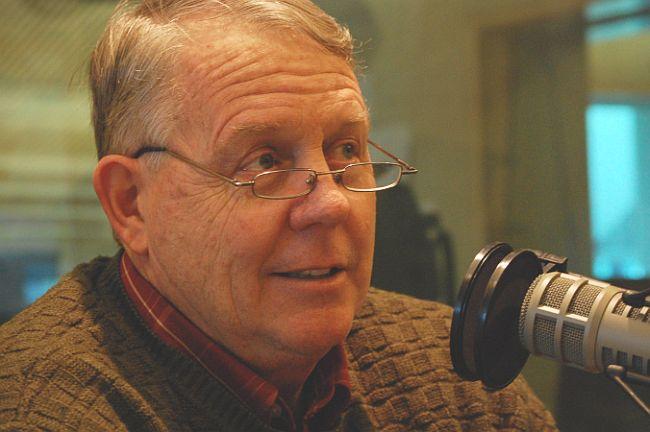 Mark Seeley, University of Minnesota Dept. of Soil, Water and Climate (MPR Photo)
Mark Seeley, University of Minnesota Dept. of Soil, Water and Climate (MPR Photo)
MN_EQB_2014_Seeley – THIS IS A MUST READ
EQB event_Crabtree_6-18-2014 (see p. 11: “Improvements in transmission and distribution to reduce line loss.” Give me a break… and he didn’t mention their funding for transmission for coal promotion, nor their earlier coal gasification promotion — can’t imagine why!)
Presentation1 June 2014 Commerce (Bill Grant? How credible is the guy who want’s to “find a way forward for coal?” Note p. 3, focus on 5 sectors, and coal is NOT mentioned. Surprise, surprise…)
CSEO_EQB subcommiteee meeting – This is important for the timeline and “plan”
EQB hosts EPA rule listening session
June 17th, 2014
Where to start… in addition to just one day’s notice, look at the presenters, skewed towards “Coal on the Wires” where they can explain how it’s all about wind, an important concept as we consider what these EPA regulations mean. From this vantage point, it’s my understanding that with the new regulations, it might have an impact of maybe 7% decrease in use of coal for electrical generation. Bears more review.
Here are the EPA regs they’ll be talking about, and it’s open for Comment until some time n September:
Proposed power plant regulations
Clean Power Plan Proposed Rule – June 2, 2014
Proposed Carbon Pollution Standards for Modified and Reconstructed Power Plants – June 2, 2014
TOMORROW, at the EQB (click for larger version):
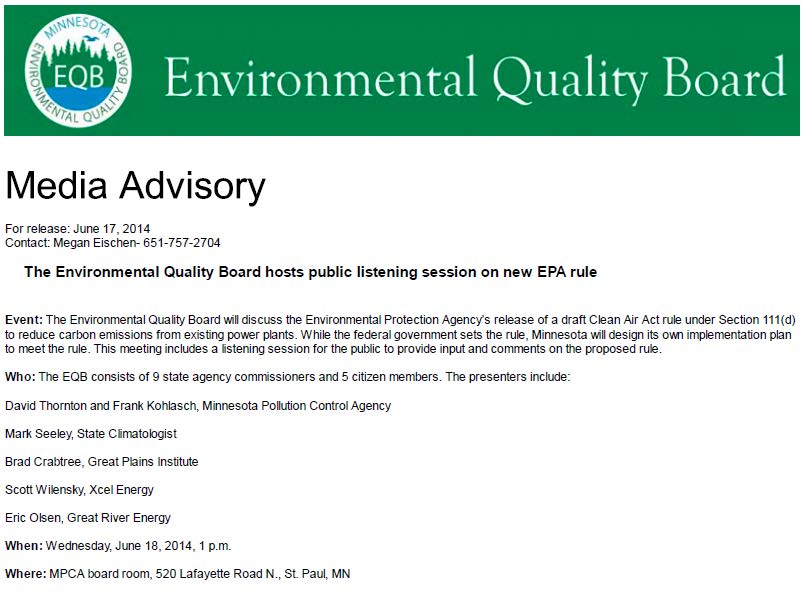 From the looks of it, it sure looks like more of a “talking session” to me. And note those last three!
From the looks of it, it sure looks like more of a “talking session” to me. And note those last three!
Brad Crabtree, Great Plains Institute
Scott Wilensky, Xcel Energy
Eric Olsen, Great River Energy
All promoters of transmission, “Coal on the Wires,” otherwise known as CapX 2020 plus. Here’s CapX 2020, look at those North Dakota references:
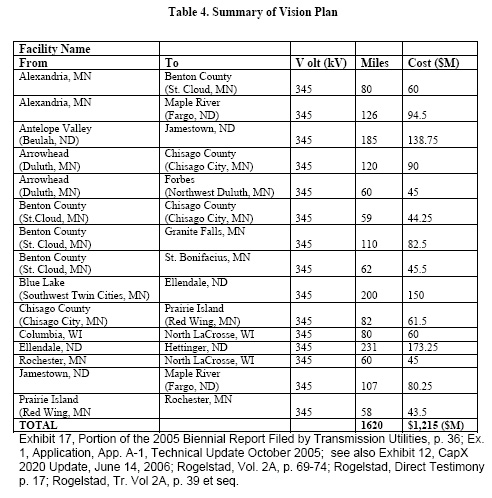 And the map, again, look where it starts:
And the map, again, look where it starts:
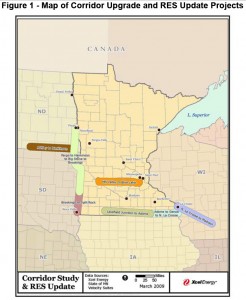 And the MISO Multi-Value Project list of 17 transmission projects:
And the MISO Multi-Value Project list of 17 transmission projects:
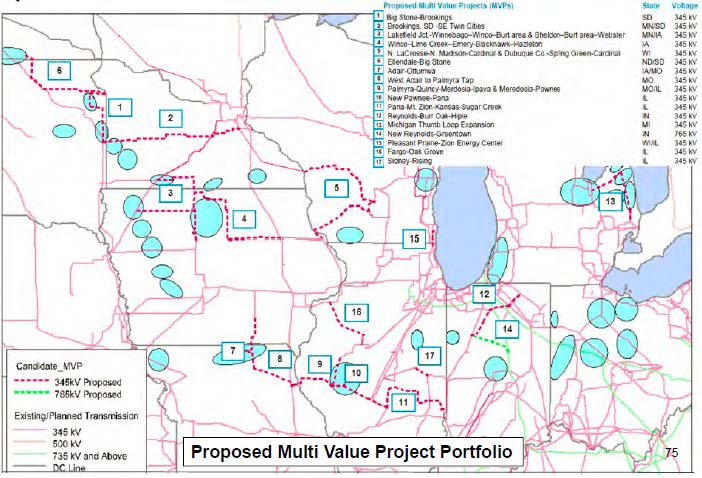 And folks, with all that transmission, here in the Midwest, we’re most of the way to JSCP:
And folks, with all that transmission, here in the Midwest, we’re most of the way to JSCP:
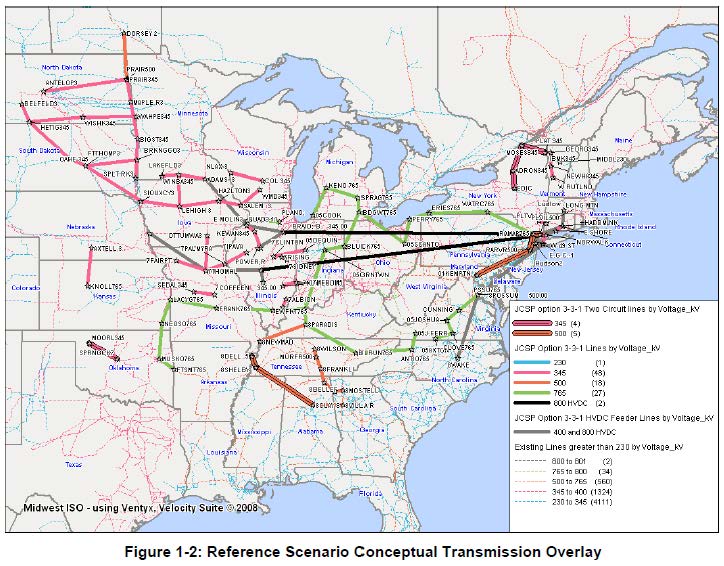 As Xcel’s Tim Carlsgaard argued the other day, there are no plans for new coal… Well, when CapX 2020 was at the PUC for the Certificate of Need, MISO’s Jeff Webb testified that there was 3,441 of new coal in ND, SD, IA and MN in the MISO queue (and over 7,000 MW of wind in the Illinois queue). And we know that transmission for coal pays, and oh, how it pays:
As Xcel’s Tim Carlsgaard argued the other day, there are no plans for new coal… Well, when CapX 2020 was at the PUC for the Certificate of Need, MISO’s Jeff Webb testified that there was 3,441 of new coal in ND, SD, IA and MN in the MISO queue (and over 7,000 MW of wind in the Illinois queue). And we know that transmission for coal pays, and oh, how it pays:
But that’s different now… OH? How so? Because it’s not different. It’s “Coal on the Wires.”
First, there’s no talk of closing the coal plants in the area where CapX 2020 transmission starts. Minnesota Power did buy a transmission line and will convert it to wind, but what will happen to the coal on that line:
Oh, right, CapX 2020 will be up and running by then. And after all, additional transmission for coal has been in the works for a long, long time, well over the 15 years that I know of:

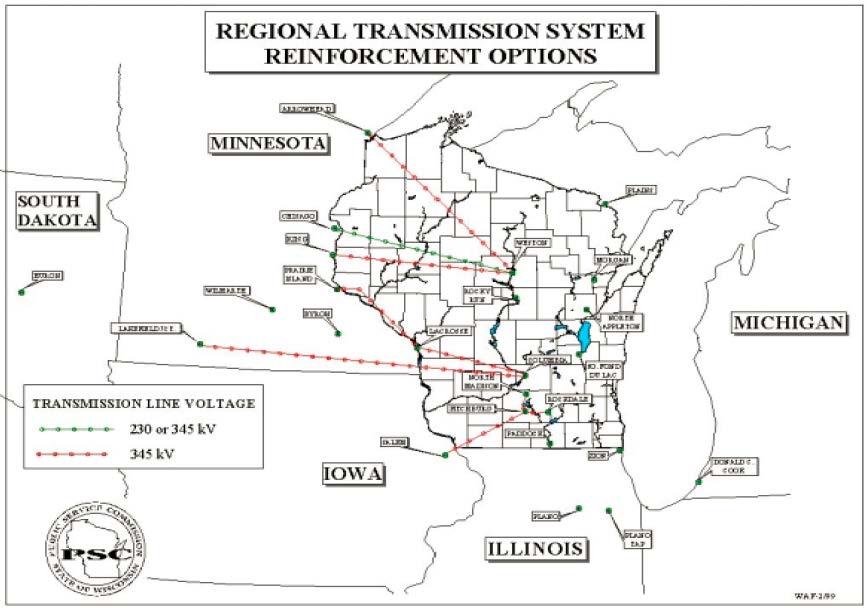 You can see how the “new” CapX 2020, JCSP, and MISO MVP plans have built on the foundation of Lignite Vision 21 and WRAO/WIREs. Yea, but that’s still old news. Sure, but there’s a lot to be said about learning from history. And then there’s this matter of trajectory, we can see where this is going.
You can see how the “new” CapX 2020, JCSP, and MISO MVP plans have built on the foundation of Lignite Vision 21 and WRAO/WIREs. Yea, but that’s still old news. Sure, but there’s a lot to be said about learning from history. And then there’s this matter of trajectory, we can see where this is going.
As I noted on No CapX2020 not long ago, here’s what’s up with coal right now:
- Not one North Dakota coal plant has been shut down.
- Minnesota Power has purchased the “coal line” coming from North Dakota into Northern Minnesota, and once CapX 2020 is up and running at the western end, they’ll put that coal generation on CapX.
- Read the federal judge’s decision on the Next Generation Energy Act, declaring it unconstitutional. First, the decision notes that the Dry Fork coal plant has been moved from the West into the Eastern Interconnect (it’s “new coal” now on transmission heading our way that wasn’t coming here before).
- Also in that decision, it discusses plans for a new coal fired plant in South Dakota.
- And also the potential for an additional unit at Dry Fork, which is now in Eastern Interconnect (coming our way).
- AND it discusses the surplus at Milton Young, which would be exacerbated by transmission prohibitions of the Next Generation Energy Act.
What else is planned? Let’s all start looking, particularly since the federal judge’s decision on the Next Generation Energy Act.
Don’t forget that there is not one single Renewable Energy Standard/Mandate that requires any coal be shut down. It only requires addition of “renewable” generation. Think about that. If we shut down the coal, for instance the North Dakota coal where CapX starts, there would be plenty of transmission capacity for wind and the back up gas or hydro to firm it up. DOH! So if the enviros and those supporting RES across the country are serious about stopping coal, why aren’t they including requirements to shut down coal, and why are they promoting transmission? It doesn’t reduce emissions, doesn’t reduce CO2 or anything else, it just adds wind generation on top of an admitted surplus. Why support and promote transmission, and not require shut down of coal? Well, they are getting paid to support and promote transmission.
And speaking of Great Plains Institute…. GPI has long been trying, as Bill Grant did, to “find a way forward for coal” (Walton’s Bill Grant and “low carbon coal”). Remember Great Plains and all they did for money on coal gasification? Here’s just a bit of it:
Great Plains Institute for Sustainable Development
To support the efforts of its Coal Gasification Working Group.
Minneapolis, MN $437,500
21 mos. 2006Great Plains Institute for Sustainable Development Inc.
To brief Midwest lawmakers and regulators about how advanced coal technologies are currently deployed in Europe and encourage their support for similar adoption here.
Minneapolis, MN $99,400
1 yr. 2007
Here’s more:
IGCC toadies in Pierre, SD
And speaking of the EPA, here’s a settlement where they caved in exclusion of coal gasification as BACT (DOH, how could it be when it’s not happening? The EPA was right, and the IGCC toadies pushed for inclusion of coal gasification and got this settlement, and how much money was attached to that? Furthering the IGCC: Pipedreams of Clean and Green is not in anyone’s interest.):
We must remember history and hopefully not repeat it. There’s the established history of transmission planning for coal, and there’s the established history of “environmental” NGOs supporting coal gasification and transmission for money. As they discuss these new EPA regulations and the potential impact, remember that they put their mouth where their money is.
Meanwhile, about those Comments to the EPA? Again, here’s what’s at issue:
Proposed power plant regulations
Clean Power Plan Proposed Rule – June 2, 2014
Proposed Carbon Pollution Standards for Modified and Reconstructed Power Plants – June 2, 2014
And read Charlie Komanoff’s views:
How to file Comments? From the fed website, the pre-publication version I have doesn’t state the deadline, but it’s September sometime:
Submit your comments, identified by DocketID No. EPA-HQ-OAR-2013-0602, by one of the following methods:
- Federal eRulemaking portal: http://www.regulations.gov
- Email: A-and-R-Docket@epa.gov. Include docket ID No. EPA-HQ-OAR-2013-0602 in the subject line of the message.
- Facsimile: (202) 566-9744. Include docket ID No. EPA-HQ-OAR-2013-0602 on the cover page.
- Mail: Environmental Protection Agency, EPA Docket Center (EPA/DC), Mail code 28221T, Attn: Docket ID No. EPA-HQ-OAR-2013-0602, 1200 Pennsylvania Ave., NW, Washington, DC 20460. In addition, please mail a copy of your comments on the information collection provisions to the Office of Information and Regulatory Affairs, OMB, Attn: Desk Officer for the EPA, 725 17th St. NW, Washington, DC 20503.
EPA’s carbon rule open for comment
June 2nd, 2014
Leave it to Charlie Komanoff to tell it like it is:
I’m expecting climate change deniers to come out of the woodwork, and I’m SO tired of hearing about Obama’s “War on Coal” which, unfortunately, doesn’t exist. Watching this Administration’s push for IGCC coal plants, promotion of transmission for coal, and Obama’s donations from coal interests, give me a break — name just ONE coal plant he’s shut down…
… I’m waiting… right… never happened.
Meanwhile, the recession did a lot for closing coal plants and less burning because demand dropped so significantly.
Finally we have the EPA rules on CO2 reduction released for comment… well, it’s proposed. And now it’s open for Comment:
Proposed power plant regulations
Clean Power Plan Proposed Rule – June 2, 2014
Proposed Carbon Pollution Standards for Modified and Reconstructed Power Plants – June 2, 2014
There are 120 days to file comments, presume it’s the very end of September. How to file? From the fed website, the pre-publication version dated today (so the deadline isn’t clear, when was/is it to be published? It’s at least 120 days from today, perhaps a little longer.):
Submit your comments, identified by DocketID No. EPA-HQ-OAR-2013-0602, by one of the following methods:Federal eRulemaking portal: http://www.regulations.govEmail: A-and-R-Docket@epa.gov. Include docket ID No. EPA-HQ-OAR-2013-0602 in the subject line of the message.Facsimile: (202) 566-9744. Include docket ID No. EPA-HQ-OAR-2013-0602 on the cover page.Mail: Environmental Protection Agency, EPA Docket Center (EPA/DC), Mail code 28221T, Attn: Docket ID No. EPA-HQ-OAR-2013-0602, 1200 Pennsylvania Ave., NW, Washington, DC 20460. In addition, please mail a copy of your comments on the information collection provisions to the Office of Information and Regulatory Affairs, OMB, Attn: Desk Officer for the EPA, 725 17th St. NW, Washington, DC 20503.
There are public hearings, but only in Atlanta, Denver, Pittsburgh, and D.C., not exactly convenient for most of us in the U.S. Contact Ms. Pamela Garrett at 919-541-7966 or at garrett.pamela@epa.gov to register to speak at one of the hearings. The last day to pre-register in advance to speak at the hearings will be Friday, July 25, 2014. See notice, starting on p. 2:
Classic backwards thinking — efficiency, conservation, demand side reductions, by whatever name, it’s #4 of 4 on their list:
4. Reducing emissions from affected EGUs in the amount that results from the use of demand-side energy efficiency that reduces the amount of generation required.
One encouraging thing is that they don’t intend to rely on carbon capture and storage, which is good because it’s just not possible, plausible for existing plant retrofits (although they keep up the hope/hype for new plants), but it regurgitates the hype that carbon capture and storage is a viable option for new plants and something they considered, but rejected, for existing plants. How absurd to even consider it, but I guess I’ll have to trot out studies and even environmental review showing the extreme safety risks, costs, and improbability/implausability of finding somewhere to put it (not that it will stay there, mind you), and the “paid to play” push of toadies like Clean Air Task Force (The Carbon Capture and Storage Imperative)(or regulatory toadies: “Clean Coal and Carbon Sequestration.”) (Deal illustrates different philosophies among environmental groups on energy future)(or this Technology touted as solution for coal power). The EPA has this to say:
Fine, we can trot out the studies showing CO2 leakage and more:
Long-term Effectiveness and Consequences of Carbon Dioxide Sequestration – Shaffer
And of course there will be a lot of backlash from climate change deniers — I’ve heard aside comments at the transmission hearings about Obama shutting down coal plants (Oh? When I ask for specifics, there’s no reply… there is no “war on coal.”). These factoids are from Leslie Glustrom’s Geology’s War on Coal released today:
Fact #1: The top 4 US coal companies are currently running in the red and reporting large losses:
- #1 US coal producer, Peabody, reported a loss from continuing operations in 2013 of $286 million (and as additional loss from discontinued operations of $226 million (see page 43, Peabody 2013 10-K) and a loss from continuing operations of $44.3 million for 2014 Quarter 1 (Q1).
- #2 US coal producer, Arch Coal Inc, reported a loss of $641 million for 2013 (see page 57, Arch 2013 10-K) and $124 million in losses for 2014 Q1.
- #3 US coal producer, Alpha Natural Resources, reported over $1 billion in losses for 2013 (see page 57 Alpha Natural 2013 10-K) and a net loss of over $55 million for 2014 Q1.
- #4 US coal producer, Cloud Peak reported a net income of $52 million for 2013 but a net loss of $15 million for 2014Q1. (See page 3, Cloud Peak 2014 Q1 10-Q).
Fact #2-Coal Company stock prices have plummeted in recent years. This can be followed on any financial website (e.g. Reuters Finance) using the three letter ticker abbreviation for the coal companies. Before the EPA had even announced its carbon regulations for existing coal plants:
- #1 Peabody (“BTU”)’s stock price had lost about 81% of its value falling from a peak of $88.69/share in June 2008 to $16.16/share on Friday May 30, 2014.
- #2 Arch Coal (“ACI”)’s stock price had lost 95% of its value falling from a peak of $77.40/share in June 2008 to $3.56 on Friday May 30, 2014.
- #3 Alpha Natural Resources (“ANR”)’s stock price had lost about 97% of its value falling from a peak of $108.73 in June 2008 to $3.88 on Friday May 30, 2014.
- #4 Cloud Peak (“CLD”)’s stock price has been the most stable but still has dropped about 21% from a 2010 peak of $23.56 to $18.47 on Friday May 30, 2014.
Fact #3—It is very likely that the US is past peak coal production, with the peak occurring in 2008 of 1.171 billion tons while 2013 coal production fell below 1 billion tons for the first time since 1993. It is unlikely that coal production in any US coal region will increase enough in the coming years to surpass the 2008 production.
Fact #4—The costs to produce coal by the coal companies are rising regularly as the coal becomes less accessible. Even in the big, strip mines of Wyoming, the amount of dirt (“overburden”) that needs to be moved is increasing and driving up production costs. Instead of making the capital investments needed to mine this coal, the coal companies are slashing their capital expenditure budgets making it unlikely that coal production will be increasing in the future.
When asked why coal production in Wyoming was not increasing as coal prices rose, Peabody CEO Greg Boyce described the situation as follows during Peabody’s third quarter conference call in 2013:
“…people are going to have to start spending real cash to repair equipment that’s been parked, replace engines, rear motors and the like. That will provide a bit of an increment, but then in reality, people have not spent capital to replace equipment that ultimately reached the end of its useful life or spent capital to overcome the annual increase in stripping ratio that naturally occurs in the Powder River Basin.
Fact #5—The largest US coal mines are beginning to play out. What used to the be largest US coal mine—the Black Thunder in Wyoming—produced about 10% of the country’s coal. Now the owner of the Black Thunder mine, Arch Coal, says that the mine is likely to start playing out by 2020. (See page 15, Arch 2013 10-K). The third largest US coal mine, the Cordero Rojo owned by Cloud Peak plans to take about a 25% production cut in 2015 due to rising costs of production and declining profit margins.
Paul Krugman has a few things to say about Crazy Climate Economics:
Minnesota’s Next Gen Energy Act unconstitutional
April 19th, 2014
Judge Susan Richard Nelson issued an order yesterday declaring Minnesota’s Next Generation Energy Act unconstitutional because it “constitutes impermissible extraterritorial legislation and is a per se violation of the dormant Commerce Clause.”
I finally found a copy of the decision, I was looking in all the wrong places. Here’s the Order (thanks to the STrib for posting it):
April 18 2014 Order – Next Generation Energy Act Suit Minn. Stat. 216H.03
It’ll likely be appealed, but I wouldn’t bet on any success. The impact of this decision will be what I’ve been expecting — dreadful — the doors are open for even more coal plants (note the discussion of surplus capacity in the decision) and with CapX mostly built, we’ve got the infrastructure for 50+ years of coal generated electricity exports across Minnesota to market, and 50+ years of mercury for our fish, and all those emissions for us to breathe. Great, just great.
MN Rules 7849 & 7850 Updates
February 25th, 2014
It’s like winter in Minnesota — will this rulemaking never end? We’re pretty much ensconced in Minn. R. ch. 7850 now, siting. PROGRESS! Here’s where it stands:
The next meeting of the Rulemaking Advisory Committee is TOMORROW:
February 26, 2014 @ 9:30 – 11 30 a.m.
Rulemaking Advisory Committee
PUC Building, Basement (look for signs)
121 – 7th Place East
St. Paul, MN 55101

